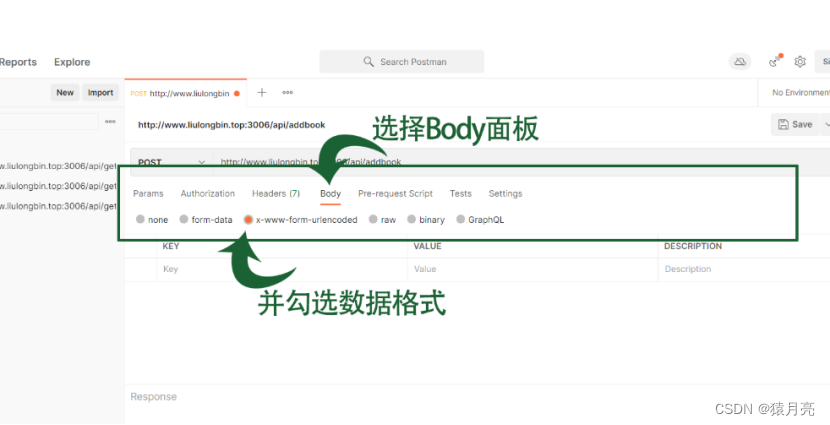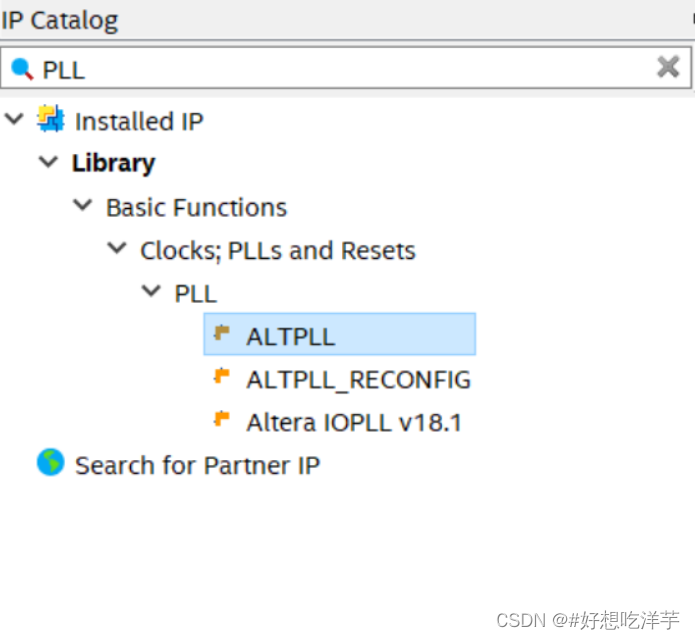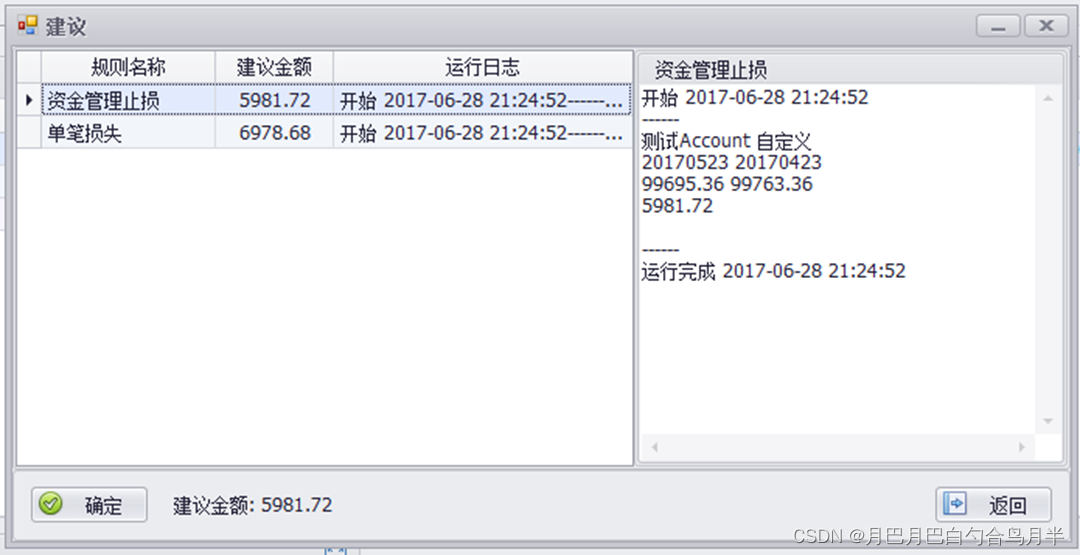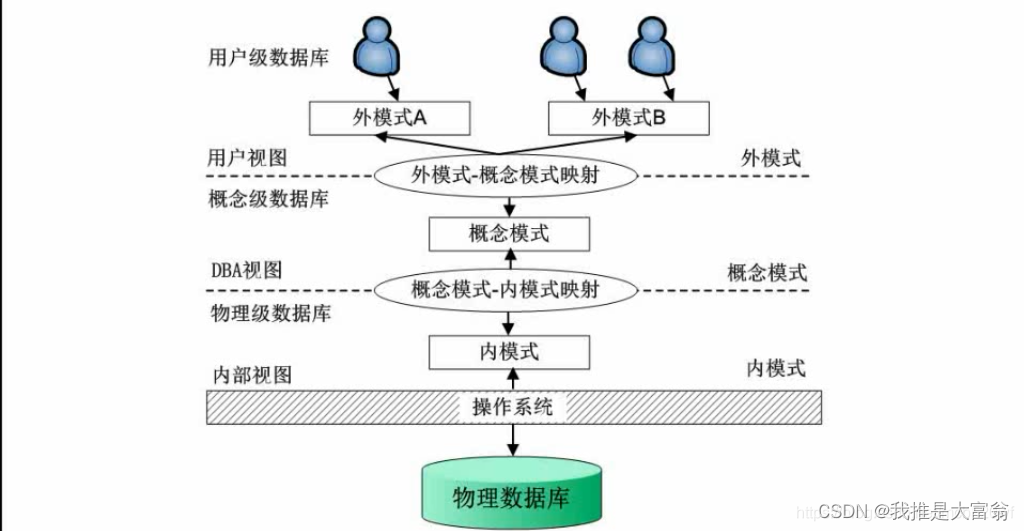1.构造函数
补充:npos:size_t类型数据的最大值

| default (1) | string(); 构造空的string类对象 |
|---|---|
| copy (2) | string (const string& str); 拷贝构造函数(深拷贝) |
| substring (3) | string (const string& str, size_t pos, size_t len = npos); 在str的pos处开始,拷贝len个字符。 如果len为npos(不传参)或str从pos到尾的字符个数小于len,则有多少拷多少 |
| from c-string (4) | string (const char* s); 用C-str来构造string类的对象 |
| from sequence (5) | string (const char* s, size_t n); 拷贝s的前n个字符 |
| fill (6) | string (size_t n, char c); 用n个字符连续的字符c来构造string类的对象 |
| range (7) | template <class InputIterator> string (InputIterator first, InputIterator last); 用从first到last(last取不到)的字符串构造string对象 |
2.string类的对象的容器操作
2.1 size

返回string的长度。
2.2 lenth
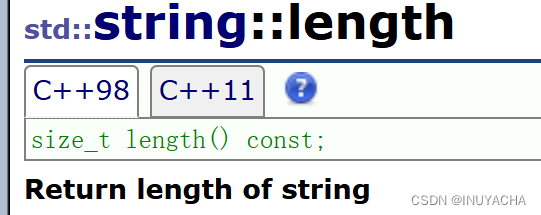
返回string的长度。
2.3 capacity

返回空间总大小
2.4 empty

检测字符串是否为空串,如果是,返回true,反之返回false。
2.5 clear

清空有效字符,使其变为空串
2.6 reserve

预留能容纳n个字符空间,也就是扩容。但是,这个操作不会改变size和内容。
注意:标准并未要求该函数一定要有缩容的功能。
2.7 resize
将有效字符改成n个。
如果n等于size,什么也不做。
如果n大于size,则尾插连续的字符c,使得size与n相等。如果没有指定字符c,则默认c为'\0'
如果n小于size,则保留前n个字符,多余的部分直接去掉。
注意:该函数会将size变成n,改变size的同时也改变了内容。并且,这个操作可能改变capacity
3.迭代器
定义:迭代器不一定是指针,但迭代器有类似于指针的供能。迭代器也有指向性,可以指向某一块空间;迭代器也可以解引用,用于访问迭代器指向的空间。
string类的迭代器有四种。
| iterator | a random access iterator to char (convertible to const_iterator) 正向迭代器 访问char类型(iterator类型迭代器可转换成const_iterator) |
| const_iterator | a random access iterator to const char 正向常迭代器 访问const_char类型 |
| reverse_iterator | reverse_iterator<iterator> 反向迭代器 访问char类型(reverse_iterator可转换成const_reverse_iterator) |
| const_reverse_iterator | reverse_iterator<const_iterator> 反向常迭代器 访问const_char类型 |
上述未具体说明的迭代器都不可以相互转换
正向迭代器和反向迭代器的区别:
1.正向迭代器左小右大,逆向迭代器左大右小
2.正向迭代器+n将向右偏移n份空间,逆向迭代器+n将向左偏移n份空间
3.1 begin

返回指向第一个字符的正向(常)迭代器
3.2 end

返回指向最后一个字符的正向(常)迭代器
3.3 rbegin

返回指向最后一个字符的逆向(常)迭代器
3.4 rend

返回指向第一个字符的逆向(常)迭代器
3.5 operator[]

取出string对象的第pos个字符的引用。(由于取出的是引用,所以可以通过这种方法在string对象中写入数据)
有了迭代器以及对[]的重载,可以做出以下遍历。
#define _CRT_SECURE_NO_WARNINGS
#include <iostream>
#include <string>
using namespace std;
int main()
{
string A = "asdfg";
for (string::iterator it = A.begin(); it < A.end(); it++)//正向
cout << *it;
cout << endl;
for (string::reverse_iterator it = A.rbegin(); it < A.rend(); it++)//逆向
cout << *it;
cout << endl;
for (size_t i = 0; i < A.size(); i++)//正向
cout << A[i];
cout << endl;
for (int i = A.size() - 1; i >= 0; i--)//逆向
cout << A[i];
cout << endl;
return 0;
}4.修改
4.1 push_back

后增一个字符,使size+1,可能改变capacity(取决于是否右扩容)
4.2 oprator+=
| string (1) | string& operator+= (const string& str); 后增一个string对象 |
|---|---|
| c-string (2) | string& operator+= (const char* s); 后增一个C-string |
| character (3) | string& operator+= (char c); 后增一个字符 |
4.3 append
| string (1) | string& append (const string& str); 后增一个string对象 |
|---|---|
| substring (2) | string& append (const string& str, size_t subpos, size_t sublen); 在str的subpos处取sublen个连续的字符(如果sublen比可取的字符数量多或sublen为npos,则有多少取多少),后增到string对象中 |
| c-string (3) | string& append (const char* s); 后增一个C-string |
| buffer (4) | string& append (const char* s, size_t n); 后增s的前n个字符 |
| fill (5) | string& append (size_t n, char c); 后增n个连续的字符c |
| range (6) | template <class InputIterator> string& append (InputIterator first, InputIterator last); 后增一个从first到last(last处取不到)的字符串 |
4.4 insert
| string (1) | string& insert (size_t pos, const string& str); 在string对象的pos处插入str |
|---|---|
| substring (2) | string& insert (size_t pos, const string& str, size_t subpos, size_t sublen); 从str的pos处取subpos个字符(如果sublen比可取的字符数量多或sublen为npos,则有多少取多少),插入到string对象的pos处 |
| c-string (3) | string& insert (size_t pos, const char* s); 在string对象的pos处插入s |
| buffer (4) | string& insert (size_t pos, const char* s, size_t n); 在string对象的pos处插入s的前n个字符 |
| fill (5) | string& insert (size_t pos, size_t n, char c);
void insert (iterator p, size_t n, char c);
在string对象的pos或p处插入连续个字符c(注意:使用insert插入一个字符时,必须写上需插入字符的数量,也就是1,这个设计很阴间,小心一点别写错了) |
| single character (6) | iterator insert (iterator p, char c); 在string对象的p处插入字符c |
| range (7) | template <class InputIterator> void insert (iterator p, InputIterator first, InputIterator last); 在p处插入一个从first到last(last处取不到)的一个字符串 |
4.5 erase
| sequence (1) | string& erase (size_t pos = 0, size_t len = npos); 从pos处开始删除len个字符(如果len比可删除的字符还要多或者len为npos,有多少删多少) |
|---|---|
| character (2) | iterator erase (iterator p); 删除p处的一个字符 |
| range (3) | iterator erase (iterator first, iterator last); 将string对象的first到last(last处取不到)删除 |
4.6 assign
为string对象指定一个新的字符串,替换当前内容。
注意:这里功能类似于构造函数(初始化),但这不是初始化。
| string (1) | string& assign (const string& str); 用对象str构造string对象 |
|---|---|
| substring (2) | string& assign (const string& str, size_t subpos, size_t sublen); 取str从subpos开始的sublen个字符(如果sublen比可取的字符数量多或sublen为npos,则有多少取多少),构造string对象 |
| c-string (3) | string& assign (const char* s); 用C-string构造string对象 |
| buffer (4) | string& assign (const char* s, size_t n); 取s开始的前n个字符,构造string对象 |
| fill (5) | string& assign (size_t n, char c); 用连续的n个字符c构造string对象 |
| range (6) | template <class InputIterator> string& assign (InputIterator first, InputIterator last); 用从first到last(last指向的位置取不到)的子串构造string对象 |
4.7 replace
| string (1) | string& replace (size_t pos, size_t len, const string& str); string& replace (iterator i1, iterator i2, const string& str); |
|---|---|
| substring (2) | string& replace (size_t pos, size_t len, const string& str,
size_t subpos, size_t sublen);
|
| c-string (3) | string& replace (size_t pos, size_t len, const char* s); string& replace (iterator i1, iterator i2, const char* s); |
| buffer (4) | string& replace (size_t pos, size_t len, const char* s, size_t n); string& replace (iterator i1, iterator i2, const char* s, size_t n); |
| fill (5) | string& replace (size_t pos, size_t len, size_t n, char c); string& replace (iterator i1, iterator i2, size_t n, char c); |
| range (6) | template <class InputIterator>
string& replace (iterator i1, iterator i2,
InputIterator first, InputIterator last); |

